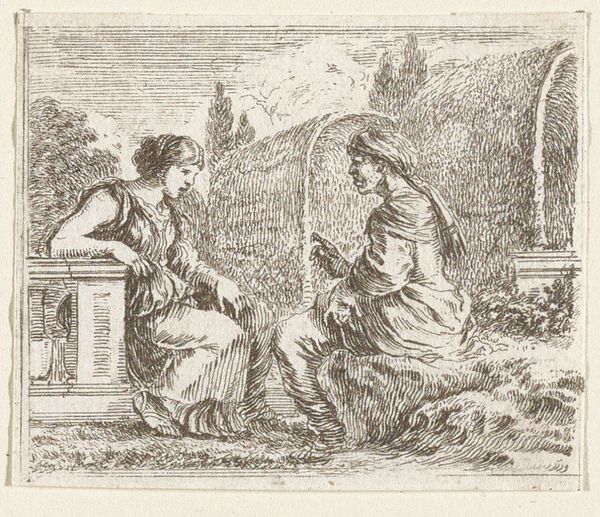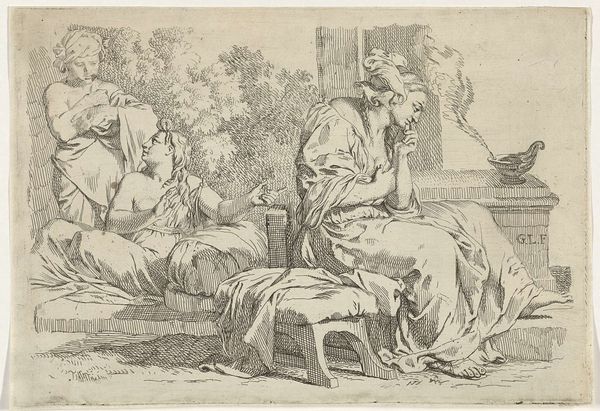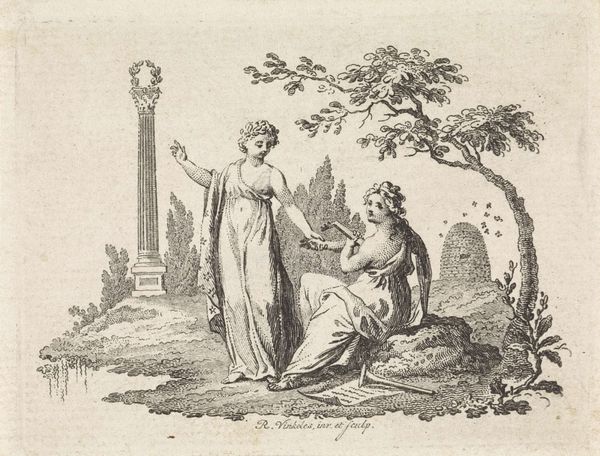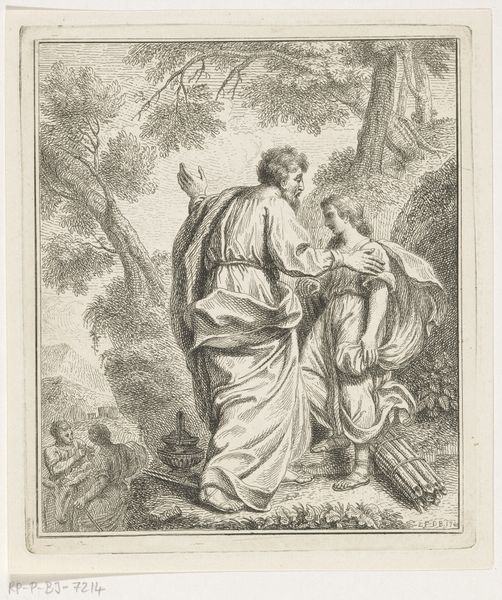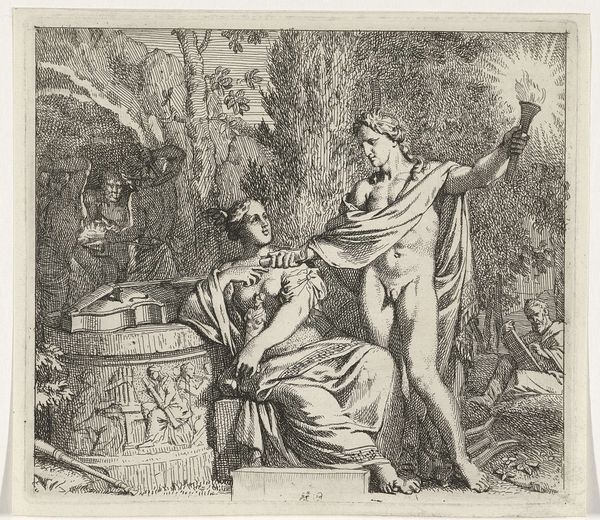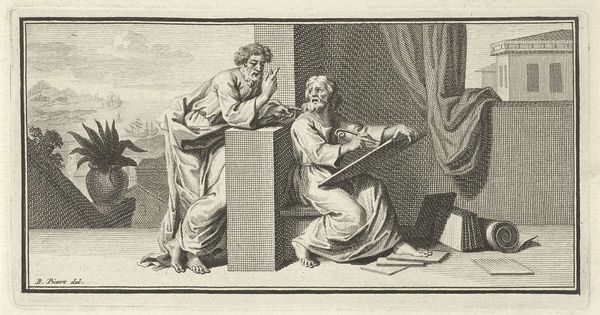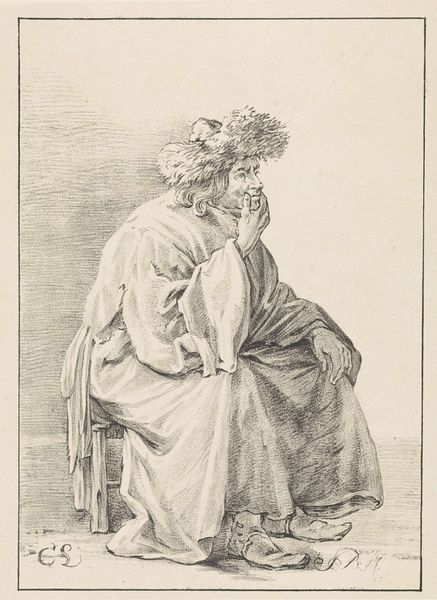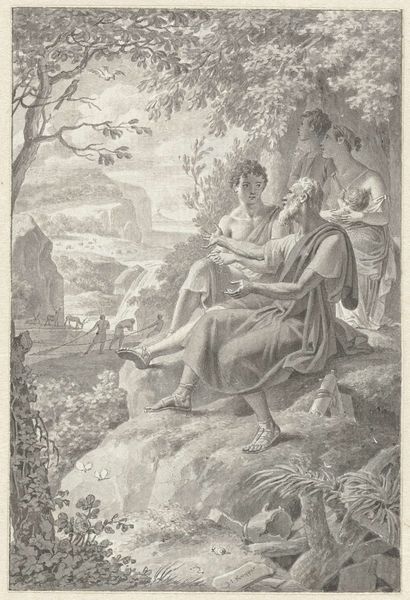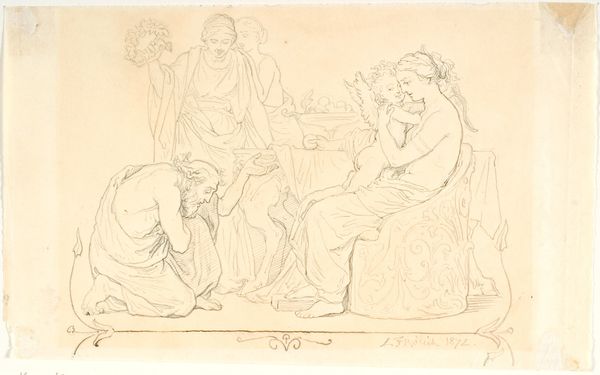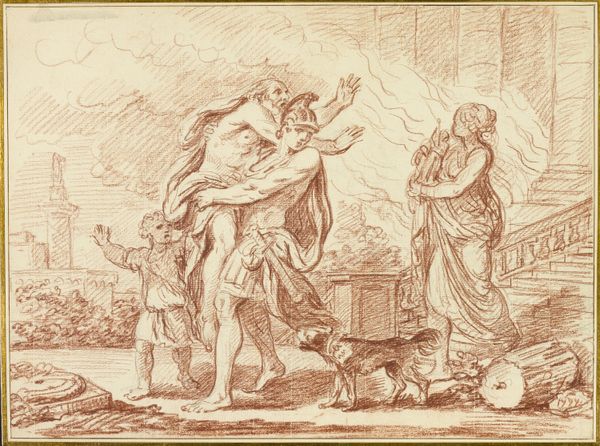
Dimensions: height 214 mm, width 295 mm
Copyright: Rijks Museum: Open Domain
Jean-Honoré Fragonard made this chalk drawing titled "Sibylle Erythrea en de profeet Daniël" in France during the 18th century. It depicts the Erythraean Sibyl and the Prophet Daniel, figures from classical and Judeo-Christian traditions, both known for their prophetic abilities. The image creates meaning through its visual codes, referencing classical antiquity and religious history. In 18th-century France, such references were common among the educated elite. This was because the French Royal Academy of Painting and Sculpture emphasized classical and religious subjects as the pinnacle of artistic achievement. Fragonard, who trained at the Academy, would have been well-versed in these traditions. The drawing may reflect a broader cultural interest in prophecy during a time of social and political upheaval. Was Fragonard commenting on the political tensions of his time? By examining period texts, such as the writings of art critics or the records of the Academy, we can gain a better understanding of how this work was received and interpreted. Ultimately, the meaning of this drawing is intertwined with its historical and institutional context.
Comments
No comments
Be the first to comment and join the conversation on the ultimate creative platform.
